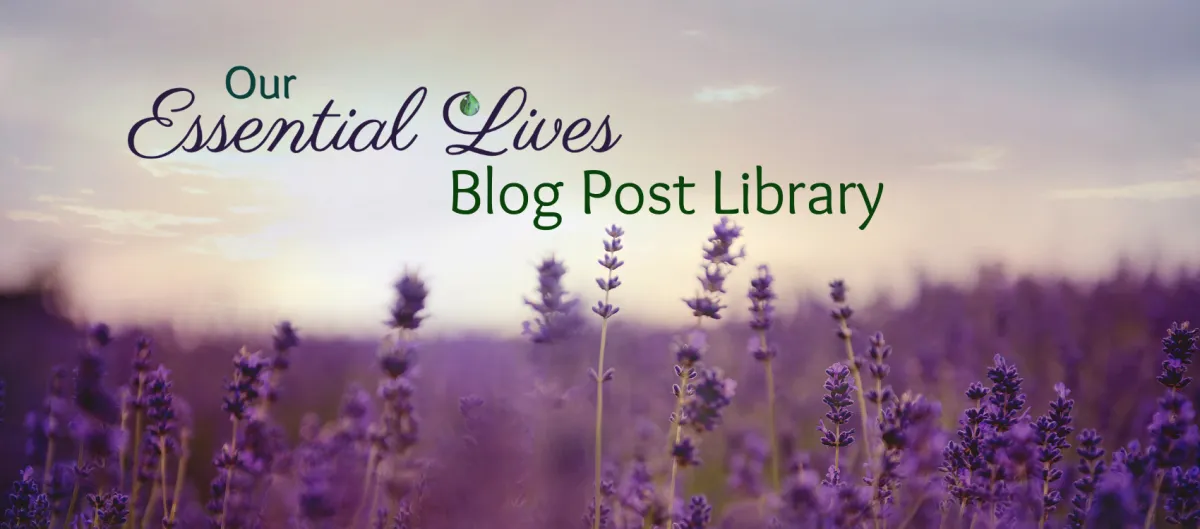

How to Make Your Own Natural Perfume with Essential Oils
“The beauty of fragrance is that it speaks to your heart and hopefully someone else’s.” - Elizabeth Taylor

Creating Your Own Signature Scent: DIY Essential Oil Perfumes
Have you ever walked past someone and been immediately drawn to their scent? A captivating fragrance has the power to elevate our mood, boost confidence, and even leave a lasting impression. But the perfumes you buy at the store—those beautifully packaged bottles—often come with hidden dangers. Many mass-market perfumes are filled with synthetic chemicals, preservatives, and fragrances that can irritate your skin, cause allergies, or disrupt your hormones. That's why creating your own signature scent using pure, natural essential oils is not just a fun DIY project—it's a healthier and more personalized alternative.
The Dangers of Store-Bought Perfumes

You might not realize it, but many commercial perfumes contain harmful chemicals. A study conducted by the Environmental Working Group found that nearly 75% of perfumes contain at least one chemical linked to allergies, hormone disruption, and even cancer. Ingredients like phthalates, parabens, and synthetic musk's are often used in fragrances to extend their longevity or enhance the scent, but these chemicals can accumulate in your body over time and cause a variety of health issues.
Another downside of store-bought perfumes is the lack of transparency. Many perfume companies don't fully disclose all the ingredients used in their products, leaving consumers unaware of what they're spraying on their skin every day. And because perfumes are applied to the skin, which is our largest organ, these chemicals are absorbed into the bloodstream, which makes choosing natural ingredients even more important.
Why Create Your Own Signature Scent?

There are many reasons why making your own perfume is an empowering and healthy choice:
Control over Ingredients: When you create your own perfume, you have full control over the ingredients. You can choose 100% pure essential oils, free from toxic chemicals or synthetic fragrances, making your perfume safe for your skin and health.
Personalization: Store-bought perfumes are often generic and not suited to your personal preferences. When you make your own, you can blend scents that resonate with you and create a unique signature scent that's entirely yours.
Therapeutic Benefits: Essential oils have their own set of therapeutic properties, from boosting mood and calming stress to improving focus or promoting relaxation. Unlike traditional perfumes, which are purely for scent, your homemade perfume will also offer the physical and emotional benefits of the oils you choose.
Cost-Effective: High-quality store perfumes often come with a hefty price tag. Making your own signature scent is cost-effective, and you can experiment with different combinations of essential oils until you find your perfect blend.
Eco-Friendly: Creating your own perfume eliminates the need for wasteful packaging and unnecessary chemicals, making it a more sustainable and environmentally friendly choice.
How to Create Your Own Signature Scent: A Step-by-Step Guide

Now that you know why you should create your own perfume, let's dive into how to do it! Crafting your own DIY perfume is easy, fun, and requires just a few basic ingredients.
Ingredients Needed:
Essential Oils: These are the heart of your perfume and will provide the scent and therapeutic benefits. Essential oils are categorized into three notes: top, middle, and base.
Top notes are the initial scents you smell. They are light and volatile. Examples: Lemon, Bergamot, Lavender, Eucalyptus.
Middle notes are the core of the fragrance. They last longer than top notes but don’t have as much staying power as base notes. Examples: Geranium, Rose, Ylang Ylang, Jasmine.
Base notes are the heaviest and last the longest. They provide depth and lasting power. Examples: Sandalwood, Vetiver, Patchouli, Frankincense.
Carrier Oil: This is used as a base for your perfume and helps dilute the essential oils. Common carrier oils for perfume include jojoba oil, sweet almond oil, and fractionated coconut oil.
Glass Perfume Bottle or Rollerball: A glass container is essential as plastic can interact with essential oils, affecting the scent and effectiveness.
Alcohol (Optional): Some DIY perfume makers use alcohol to dilute the oils and create a more fluid consistency. Vodka is a common choice, as it’s odorless and doesn’t interfere with the scent of the oils.
Distilled Water (Optional): If you’re not using alcohol, you can add a small amount of distilled water to help dilute the oils.
Step-by-Step Instructions:
Choose Your Scent Profile: Think about the type of scent you want to create. Do you want something floral, fresh, woody, spicy, or citrusy? Decide on the top, middle, and base notes to balance your fragrance.
Mix Your Essential Oils: Start with 15-30 drops of essential oils. A typical ratio is 3:5:2 for top, middle, and base notes (e.g., 3 parts top note, 5 parts middle note, 2 parts base note). Feel free to experiment with the ratios until you find a blend you love.
Example:Top note: 10 drops of Lemon (fresh, citrusy)
Middle note: 15 drops of Lavender (calming, floral)
Base note: 5 drops of Frankincense (deep, grounding)
Add Carrier Oil: After mixing your essential oils, add your carrier oil. For a 10 ml bottle, add about 8 ml of carrier oil. Jojoba or sweet almond oil works best, as they have a neutral scent that lets your essential oils shine.
Add Alcohol (Optional): If you prefer a more fluid consistency, add 1-2 tablespoons of alcohol. This helps disperse the oils and creates a smoother texture. You can also use witch hazel for a similar effect.
Let It Sit: Once your oils are mixed, seal the bottle and let it sit for at least 48 hours (up to 2 weeks) to allow the oils to meld together. The longer it sits, the stronger the fragrance will become.
Test and Adjust: After the perfume has matured, test it. If it’s too strong, add a little more carrier oil. If it’s too light, add a few more drops of essential oils.
Essential Oil Blends for Your Signature Scent

Here are some essential oil blends that you can try when creating your perfume:
Relaxing Bliss: Lavender, Chamomile, Bergamot (perfect for winding down after a long day)
Citrus Freshness: Lemon, Orange, Ylang Ylang (uplifting and energizing)
Floral Romance: Rose, Geranium, Sandalwood (ideal for a romantic, soothing scent)
Woody & Earthy: Patchouli, Cedarwood, Frankincense (grounding and calming)
Spicy Spice: Cinnamon, Clove, Ginger (warm, spicy, and cozy)
Final Tips for Making Your Own Perfume
Be patient: Natural perfumes take time to develop, so don’t rush the process. Allow the fragrance to sit and evolve over time.
Test on your skin: Essential oils can interact differently with each person’s skin, so always do a patch test before applying perfume to large areas of your body.
Keep it cool: Store your DIY perfume in a cool, dark place to prolong its shelf life and maintain the integrity of the oils.
My Final Thoughts
Making your own perfume with essential oils is a fun, personalized, and healthier alternative to commercial products. Not only do you get to create a signature scent, but you also get the added benefits of the therapeutic properties of the oils you choose. Plus, by using pure essential oils, you’re avoiding the harmful chemicals and synthetic fragrances that are often found in store-bought perfumes. Give it a try and enjoy the experience of crafting your own unique fragrance that not only smells good but makes you feel good too!

